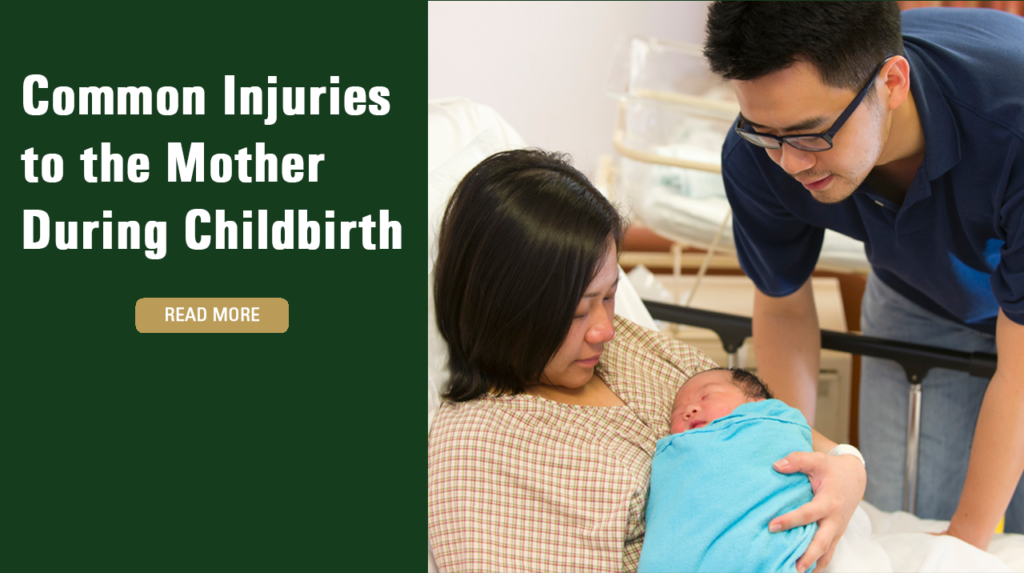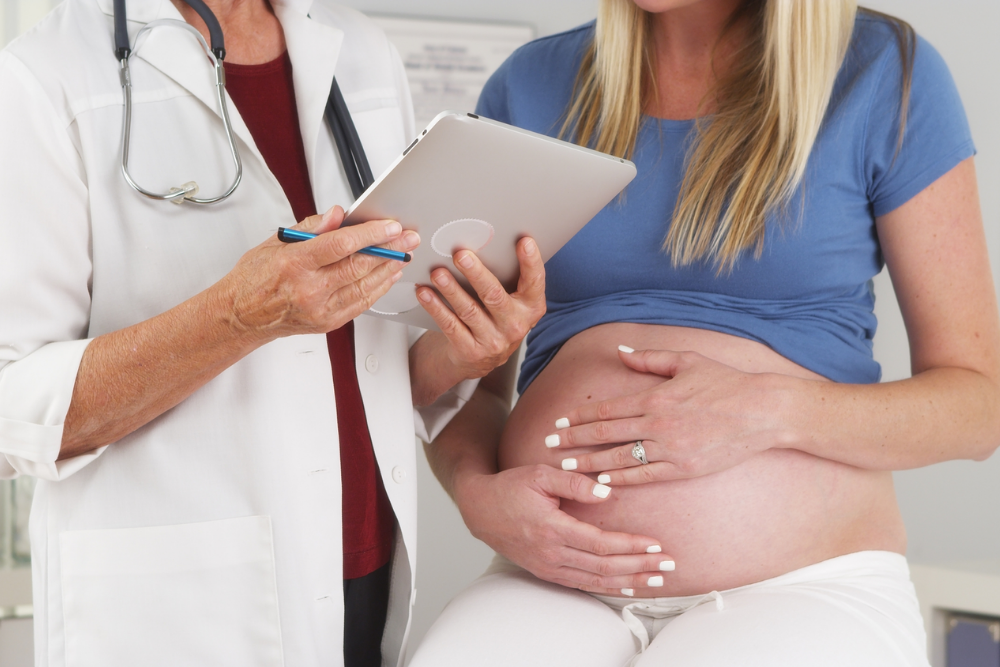Common Injuries to the Mother During Childbirth

Most first-time expectant mothers are both excited and fearful about giving birth. It is common for pregnant women to be afraid of the pain that they might experience during childbirth. While the pain involved with labor and delivery is well understood, many new mothers are unaware of the risk of maternal birth injuries. Depending on the type of injury, a maternal birth injury can cause a broad range of complications ranging from discomfort to chronic pain or permanent problems. It is important for people to understand the types of birth injuries that can happen to mothers and when they might support a legal claim.
Types Of Maternal Birth Injuries
Mothers can suffer a range of injuries during the birth process. A few of the most common types are discussed below.
- Vaginal Tearing—Vaginal tearing can occur during labor and delivery when the baby’s head is too large to navigate safely through the birth canal.
Some other issues that can cause vaginal tearing include the following:
- Vaginal walls failing to stretch enough to accommodate the infant’s head
- Fast deliveries
- Improper birth position
- Being overweight or obese
- Using birth-assistive devices like forceps
- Large baby
Vaginal tears are classified in four degrees according to severity. A first-degree tear is the least serious and involves a tear of the first tissue layer surrounding the vagina and the perineum. With this type of tear, stitches might not be necessary.
A second-degree vaginal tear is slightly more extensive and involves deeper tearing into the muscles of the perineum and vagina. Stitches are commonly used to repair this type of tear, and it is the most common type that might occur during childbirth.
Third-degree tears are more severe and extend from the vaginal opening to the anus. A third-degree vaginal tear injures the skin and muscles of the perineum and damages the muscles of the anal sphincter that help to control bowel movements. Stitches are required to repair third-degree tears.
Fourth-degree tears are the most severe type of vaginal tears and are also the least common. These tears extend from the vagina to the anus and into the rectum. Surgical intervention is required for this type of tear.
Vaginal tearing is common when women deliver their first babies. Women might also experience other issues because of vaginal tears, including fecal and urinary incontinence and pain during sex.

- Fractures—Another type of maternal birth injury that sometimes occurs during childbirth is a fracture. Some women suffer from a separated pubic symphysis during childbirth. The public symphysis is comprised of cartilage that connects the bones of the right and left pelvic girdle. When the pubic symphysis separates the bones, the mother can experience ongoing discomfort and pain that lasts from two to eight months to heal. This type of injury can happen when the baby’s head places pressure on the pubic symphysis. Another type of common fracture some mothers experience is a fractured coccyx, which is the lowest bone of the spine that makes up the tailbone. This type of fracture can be caused by pressure placed on the coccyx by the infant’s head during delivery.
- Nerve Damage—Injuries to the nerves during delivery can also occur. Depending on which nerves are damaged, mothers can suffer from a range of issues. If a mother suffers nerve damage to the femoral nerves, she might experience numbness or weakness in her legs. Nerve damage can also cause incontinence if the pudendal and pelvic nerves are damaged. Nerves can be damaged during childbirth when tissues are stretched or they are compressed.
- Inverted Uterus—A uterine inversion occurs when the placenta stays attached to the uterus and pulls the uterus out with it when the placenta leaves the vaginal canal. An inverted uterus can result in severe hemorrhaging and shock and can cause death. Depending on the degree of inversion, doctors might treat it by reinserting the uterus, performing an emergency hysterectomy, or performing abdominal surgery.
- Ruptured Uterus—A ruptured uterus is a rare type of maternal injury that can happen during labor and delivery. This might happen when an unusually large baby causes the uterus to rupture because of a scar from a previous C-section. It can also happen during the vaginal delivery of a large infant or because of
trauma. Uterine ruptures can cause the placenta or baby to move into the mother’s abdominal cavity and can cause multiple complications, including severe hemorrhaging or death. - Prolapsed Organs—Some of the pelvic organs can slip into the vagina during pregnancy or delivery when the pelvic floor muscles have been weakened. The uterus or the bladder can prolapse. Prolapses range in severity from zero to four, with four being the most severe. In a stage four prolapse, the pelvic organ will exit entirely out of the vagina.
Medical Negligence Claims And Maternal Birth Injuries
While some maternal birth injuries are unavoidable, others are caused by the negligent actions of the doctor, anesthesiologist, or other members of the labor and delivery staff. If a medical provider’s treatment fell below the expected standard of care and caused your injuries, you might be entitled to pursue compensation with the help of a mother and child injury lawyer at Raynes & Lawn.
Injuries to the mother during birth can result in serious complications and can cause severe bleeding, loss of functioning, or death. When those types of injuries result from medical negligence, the injured victims or their families might be able to hold the negligent parties accountable for their actions. The attorneys at Raynes & Lawn work closely with medical experts to analyze potential claims and help people to understand their legal rights.
Contact Raynes & Lawn Today
If you believe that your injuries during your pregnancy or childbirth were caused by the negligent actions of your doctor, midwife, or another medical provider, you should speak to one of our experienced attorneys as soon as possible. Contact us today for a free consultation by calling us at 1-800-535-1797.

For the general public: This Blog/Website is made available by the law firm publisher, Raynes & Lawn, for educational purposes. It provides general information and a general understanding of the law but does not provide specific legal advice. By using this site, commenting on posts, or sending inquiries through the site or contact email, you confirm that there is no attorney-client relationship between you and the Blog/Website publisher. The Blog/Website should not be used as a substitute for competent legal advice from a licensed attorney in your jurisdiction.
For attorneys: This Blog/Website is informational in nature and is not a substitute for legal research or a consultation on specific matters pertaining to your clients. Due to the dynamic nature of legal doctrines, what might be accurate one day may be inaccurate the next. As such, the contents of this blog must not be relied upon as a basis for arguments to a court or for your advice to clients without, again, further research or a consultation with our professionals.
